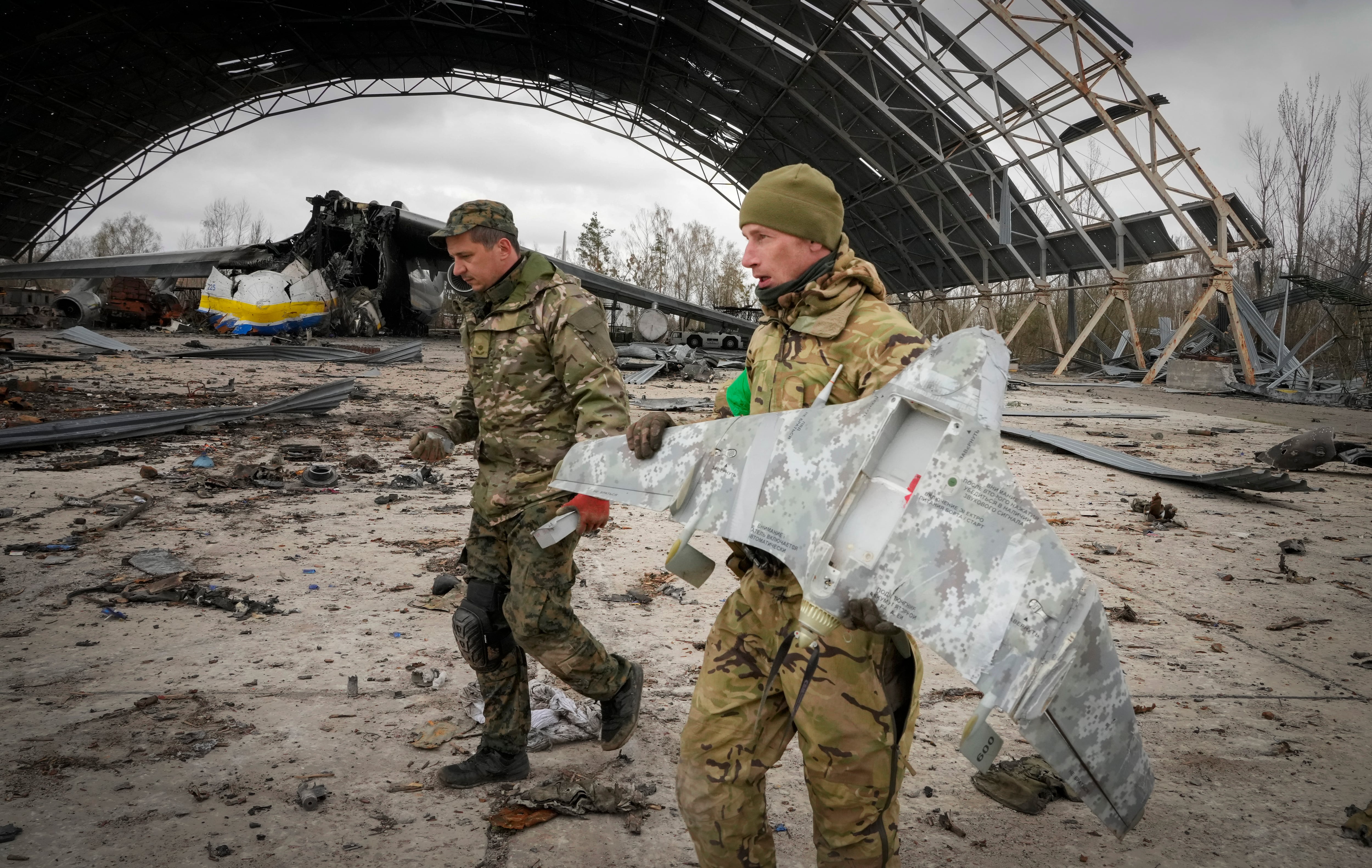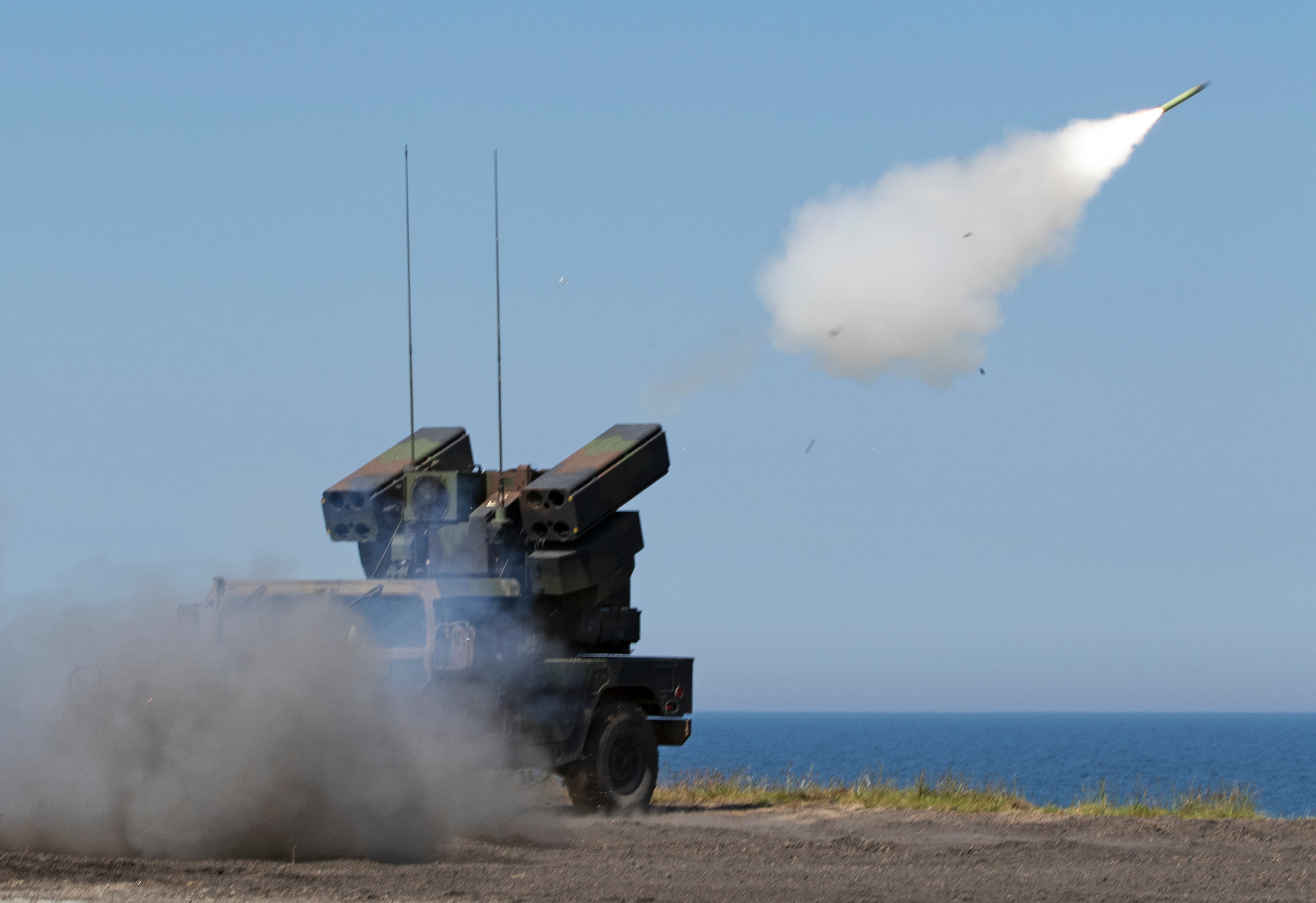WASHINGTON ― The Pentagon has modeled a new high-level team focused on rushing military aid to Ukraine on the group it used to speed supplies to troops in Afghanistan, Iraq and Syria, according to a memo obtained by Defense News and sources familiar with the matter.
Pentagon leaders several weeks ago quietly convened the group ― co-chaired by the Pentagon’s No. 2 civilian and military leaders ― to cut through its notoriously unwieldy bureaucracy. Called the Senior Integration Group-Ukraine, its mandate is to hustle military equipment to Ukraine from its own stocks, replenish those stocks, coordinate aid with NATO, support partner nations and address humanitarian issues.
The SIG-Ukraine is adapted from the little known Warfighter Senior Integration Group, which the Pentagon launched in the middle of the war on terror to answer the urgent needs of battlefield commanders. The Ukraine group’s predecessor rapidly fielded surveillance aerostats, working dogs and ballistic underwear used to protect troops from roadside bombs and much more, according to former officials.
“Effective immediately, I am establishing a Senior Integration Group-Ukraine (SIG-Ukraine), to focus on facilitating the provision of lethal and non-lethal support to enable Ukraine to more effectively defend itself against Russian aggression,” Deputy Defense Secretary Kathleen Hicks, one of the group’s co-chairs, said in her May 11 memo authorizing the group, which was already at work.
Hinting at “significant challenges ahead,” Hicks directed senior Pentagon leaders to cooperate with the SIG-Ukraine “in this very important effort to defend democracy and help defeat Russian aggression.”
RELATED

While it’s been widely reported the Pentagon has been rushing weapons to Ukrainian forces, the bureaucratic mechanism hasn’t previously been made public. Former officials said the SIG format derives its power from the involvement of senior leaders and has long been a way to make and implement decisions within days that might otherwise take months or years.
“The key attribute is the seniority attendant to that forum and the speed and agility with which it identifies and drives actions,” said Greg Kausner, a former Biden administration defense official who in 2021 temporarily assumed the duties of undersecretary of defense for acquisition and sustainment, including chairing the Warfighter SIG.
The new group is functionally co-chaired by Undersecretary of Defense for Acquisition and Sustainment Bill LaPlante and the Joint Staff’s director of operations, Lt. Gen James Mingus, as stand-ins for Hicks and Joint Chiefs vice chairman Adm. Christopher Grady. Undersecretary of Defense for Policy Colin Kahl, Comptroller Mike McCord, U.S. European Command’s leadership and top armed services acquisition chiefs are also in the group.
The SIG Ukraine is meant to respond to needs identified by U.S. European Command and handles items procured under the Ukraine Security Assistance Initiative. “The SIG addresses items such as the latest operational needs, and resolves issues impeding the urgent material and logistics requirements that is required to support EUCOM and support to Ukraine,” said Jessica Maxwell, a Pentagon spokeswoman.
The U.S. is leading a flood of western weaponry into Ukraine that’s helped blunt Russia’s initial offensive and is expected to be critical in the next phase of fighting in eastern and southern Ukraine. On Tuesday, hundreds of Ukrainian soldiers were evacuated from Mariupol, appearing to cede control of the city to Russia after 82 days of bombardment.
Congress is poised to pass a $40 billion Ukraine package that authorizes the Biden administration to send another $11 billion in U.S. military equipment to Ukraine and includes $9 billion to backfill stocks already sent.
That equipment includes 20,000 weapons designed to defeat armored vehicles, some 1,400 shoulder-fired Stinger missiles to shoot down aircraft and more than 50 million rounds of ammunition, among many other items. Heavy weaponry for the latest phase of the war includes 90 howitzers, 200,000 artillery rounds and roughly 20 radar systems to detect incoming artillery.
Without a fast-tracked process, answering Ukraine’s requests for equipment could take Washington’s bureaucracy months, with a request winding its way through the State Department and Pentagon’s security cooperation channels.
Addressing urgent needs
In 2009, Defense Secretary Robert Gates launched the 50-member Warfighter SIG to answer joint urgent operational needs statements, or JUONS, from downrange. Ash Carter, then the Pentagon’s acquisition chief, said in his 2019 book the SIG’s weekly meetings included “everybody who mattered in the whole department, from top generals to senior staffers.”
“We brought the need for camera-equipped balloons to the SIG, marking it as a super-urgent challenge on which American lives depended,” Carter said. “The officers in charge of budgeting, ordering, and shipping equipment were instructed to make it a top priority. Within days, dozens of aerostats were on their way to Afghanistan.”
RELATED

A flexible group, it has changed members, frequency and mandates ― even playing a role to arm proxy forces fighting the Islamic State group at one point ― but a common thread has been the seniority of its members and its mandate to solve the problems of commanders in war zones as they pop up, according to sources familiar with it.
Andrew Hunter, now the Air Force’s acquisition chief and formerly the director of the Joint Rapid Acquisition Cell, told Congress in 2015 the SIG was a model for cutting red tape. He described it then as “a giant room, tons of people around a table” with battlefield commanders participating by video teleconference.
“Everyone around the table, with the deputy secretary of defense there, and the question is not a debate about should we or shouldn’t we: We are going to do it. That is the bottom line,” Hunter, now the Air Force’s representative to the SIG-Ukraine, said at the time. “And everyone who has a role in the system is there, and a decision is made. The deputy secretary says, here is how we are going to do it. Everyone go out. These are the marching orders.”
As the U.S. wound down its presence in Iraq and Afghanistan, the group wound down as well and focused mainly on withdrawing people and equipment, but also procuring intelligence, surveillance, and reconnaissance services, said Ellen Lord, the undersecretary of defense for acquisition and sustainment in the Trump administration.
“In the days before mega Zoom meetings, it was highly unusual, but we had the combatant commanders and whoever the [U.S. military] leadership in-country in Iraq or Afghanistan would be,” Lord said. “The way I handled it is if there was a priority issue, maybe money wasn’t being freed up, was you would turn to the comptroller and see what we could do to resolve it.”
On Tuesday, Lord lauded the Pentagon’s new adaptation of the SIG model as a sign Ukraine has the attention of the Pentagon’s senior leaders, in a holistic way.
“It shows an enormous focus, a unity of action and a priority within the department,” Lord said.
Joe Gould was the senior Pentagon reporter for Defense News, covering the intersection of national security policy, politics and the defense industry. He had previously served as Congress reporter.








